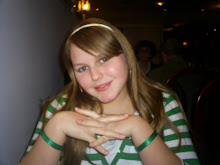
The film review for Slumdog millionaire have been mostly good, however I have found a site where some people disagree-
http://www.movietome.com/movie/365018/slumdog-millionaire/reviews/user.html this is a film review site for many new and classic movies, and this site is devised for cinema goers and for fans of the movie. Either that or this site will attract people how want a review from the member of the public. However the site contains many review from critics from The Wall street Journal, New York Post, Chicago Sun Times, Empire Magazine and many more. Here is a positive review form a fan:
Slumdog Millionaire was a very powerful movie that is a must watch for any kind of movie goer. Slumdog manages to show the harsh cruel underworld and life of India but at the same time shows the beauty of it. This movie contains some pretty strong subject matter so let those whom are mature enough to watch it, watch it. The cinematography was very dream-like giving the movie a very appropriate fell to it. Though some may argue that the movie seemed to cliche because of it story, the way that it is told is far from cliche.Overall Slumdog Millionaire is a fantastic movie that is both beautiful and harsh at the same time, with great story telling and superb cinematography, this is definetly one of the best movies yet.
The review below is from the San Fransico Chronicle how only gave the movie a 50/100:
"Slumdog Millionaire" has a problem in its storytelling. The movie unfolds in a start-and-stop way that kills suspense, leans heavily on flashbacks and robs the movie of most of its velocity. The filmmakers' motives are sincere. The story is interesting enough. Yet the whole construction is tied to a gimmicky narrative strategy that keeps "Slumdog Millionaire" from really hitting its stride until the last 30 minutes. By then, it's just a little too late.(Full review-http://www.movietome.com/pages/tracking/index.php?tid=35&ref_id=365018) There is also a few positive review who gave the moive 100/100. This review is from USA today:
Slumdog is easily Boyle's best film since he rocked the film world with 1996's Trainspotting, his highly original look at a drug subculture in Scotland.
Fanciful, epic and exuberantly paced, Slumdog Millionaire chronicles the life of Jamal Malik (Dev Patel), a dirt-poor orphan who captivates the masses as he wins a fortune on India's most popular quiz show. Told in non-linear style, the movie switches among harrowing stories of Jamal's childhood in the slums of Mumbai to his moments of awkward glory as a contestant on the show to his sudden incarceration and ensuing interrogation. It is this questioning by a police inspector (Irfan Khan) that elicits the compelling flashbacks of his early youth.In the UK the film seems to be a huge hit, although there are alos crtics in teh UK who disagree. in the guardian film website one of the review is quite4 positive:
Despite the extravagant drama and some demonstrations of the savagery meted out to India's street children, this is a cheerfully undemanding and unreflective film with a vision of India that, if not touristy exactly, is certainly an outsider's view; it depends for its full enjoyment on not being taken too seriously.
In India, where the film was set (Mumbai), reviews were qutie negative for example below http://www.apunkachoice.com/dyn/movies/english/slumdog_millionaire/slumdog_millionaire-review.html-
Saving the answer for the last, let it be said at the outset that Slumdog Millionaire is a kind of movie that is made only once in a while. It requires more than just an accomplished director to tell a story that cuts through cultural barriers while still being rooted in the grime and crime of Mumbai’s netherworld that lies in the shade of the symbols of India Shining – the skyscrapers and malls. It takes more than just a good ensemble cast to make a film like ‘Slumdog Millionaire’ work. Everything has to fall in place – the script, screenplay, direction, acting, music, editing – in sync with each other to have a movie as frisky, stark, shocking and uplifting as ‘Slumdog Millionaire’. It doesn’t happen often. May be it’s the stuff of destiny. Danny Boyle and Beaufoy have stuck to English, rather than Hindi dialogues for the most part of the film, despite the fact that you would hardly find an uneducated slumkid or a chaiwala in India who speaks English fluently. But why Boyle and Beaufoy did so is understandable. They were making a film for the international audience. If not for this cinematic liberty, the movie would not have cut across the cultural fault-lines as it does now.
http://www.apunkachoice.com/movies/- this is an Indian Film site. (where the review above was from).
However from the same review it gives a mixed opinion even though the article was mostly negative, the review site claims that the main character deserves an oscar and it gives the film four stars. The last paragraph of the review states :
There are some brilliantly executed sequences in ‘Slumdog Millionaire’ that prove Boyle’s mettle as a director. The kid Jamaal, locked in a makeshift toilet, jumps into a shit-hole just to get the autograph of his favourite filmstar. Or when the grown up brothers meet again on an under-construction building. Or the exhilarating finale when Jamaal doesn’t know the answer to the question that’s ironically the most personal to him. After all the suspense and drama, the movie leaves you in an ecstatic mood with Rahman’s ‘Jai Ho’ (a dash of Bollywood song and dance in the end) and sends you home with a bounce in your walk and smile on your face. In India there is also a paper called THE HINDU which is similar to our THE TIMES and there have been a few negative articles about the film and how it has reflected on the Indian public-
http://www.hinduonnet.com/thehindu/holnus/009200901271451.htm.
http://www.hinduonnet.com/






